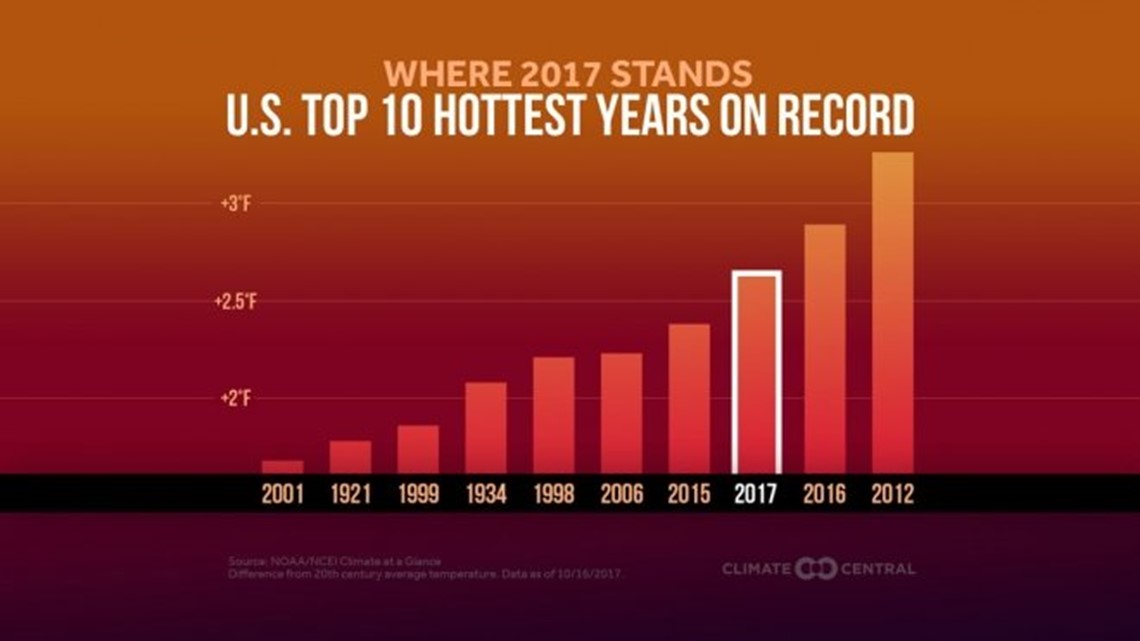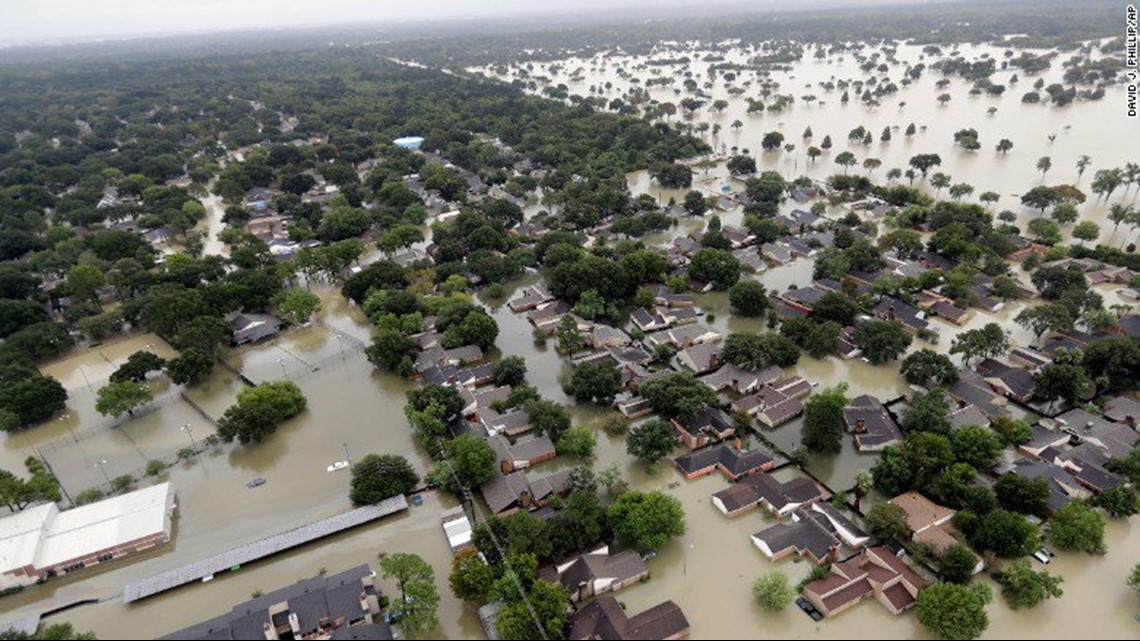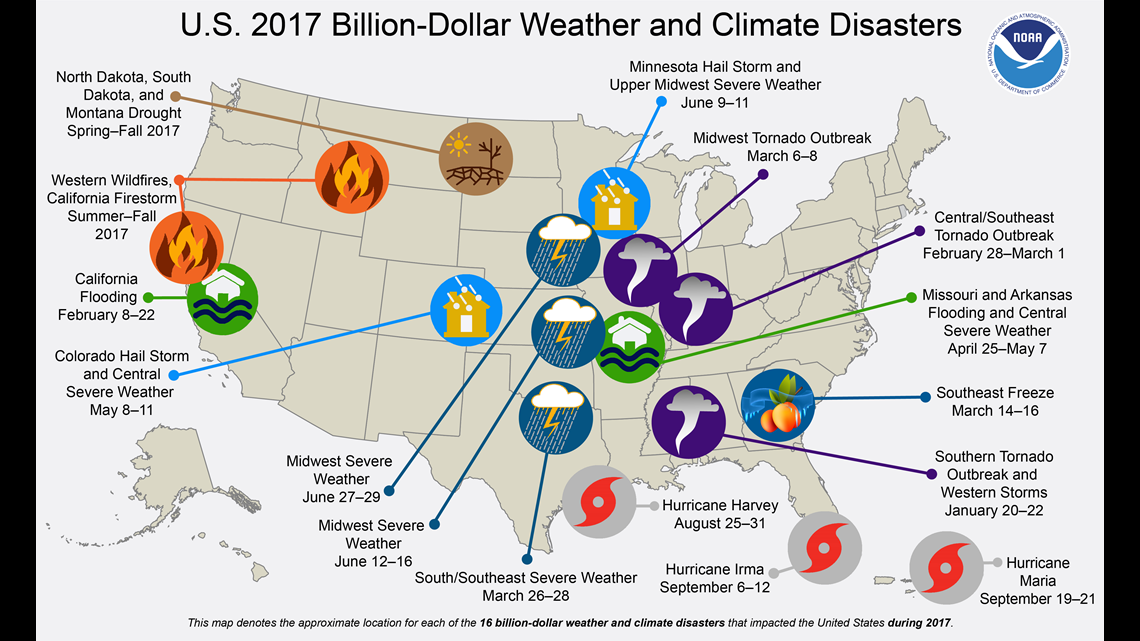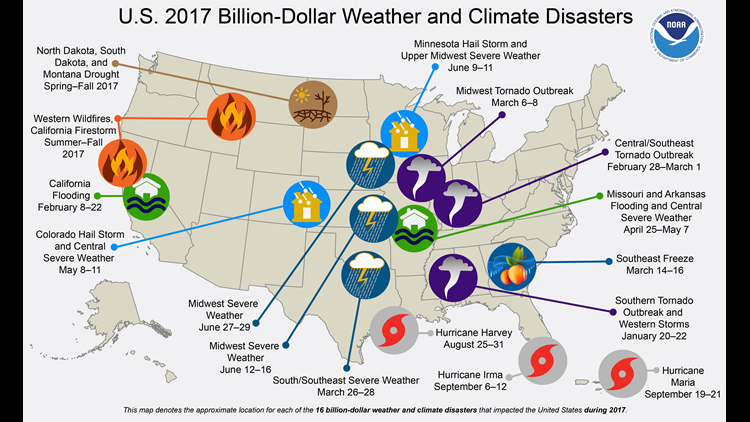New data released by NOAA on Monday continues to show climate change in a sharp warming phase, in a year that produced record-breaking disasters.
Based on preliminary data, the National Oceanic and Atmospheric Administration, reports the average annual temperature for the contiguous U.S. was 54.6°F, 2.6°F above the 20th century average. This was the third warmest year since record keeping began in 1895, behind 2012 (55.3°F) and 2016 (54.9°F), and the 21st consecutive warmer-than-average year for the U.S. (1997 through 2017). The five warmest years on record for the contiguous U.S. have all occurred since 2006.


During the year, the U.S. experienced 16 weather and climate disasters with loss
es exceeding $1 billion, with total costs of approximately $306 billion – a new U.S. annual record. The previous costliest year for the U.S. was 2005 with losses of $215 billion driven in large part by Hurricanes Katrina, Wilma and Rita. The number of events (16) ties 2011 for most billion-dollar disasters in a single year. Some of the more noteworthy events included the western wildfire season, with total costs of $18 billion, tripling the previous U.S. annual wildfire cost record. Hurricane Harvey had total costs of $125 billion, second only to Hurricane Katrina in the 38-year period of record for billion-dollar disasters. Hurricanes Maria and Irma had total costs of $90 billion and $50 billion, respectively. Hurricane Maria now ranks as the third costliest weather and climate disaster on record for the nation and Irma ranks as the fifth costliest.


This annual summary from NOAA’s National Centers for Environmental Information is part of the suite of climate services NOAA provides to government, business, academia and the public to support informed decision-making. end of November. Drought developed, expanded and intensified in the Southwest, Southern Plains and Mid-Atlantic. Drought improved in parts of Texas, the Lower Mississippi Valley and Northern Rockies.


Even though much of the country started 2018 with frigid air, most of the Earth remained well-above-normal.
-Meteorologist Eric Sorensen



